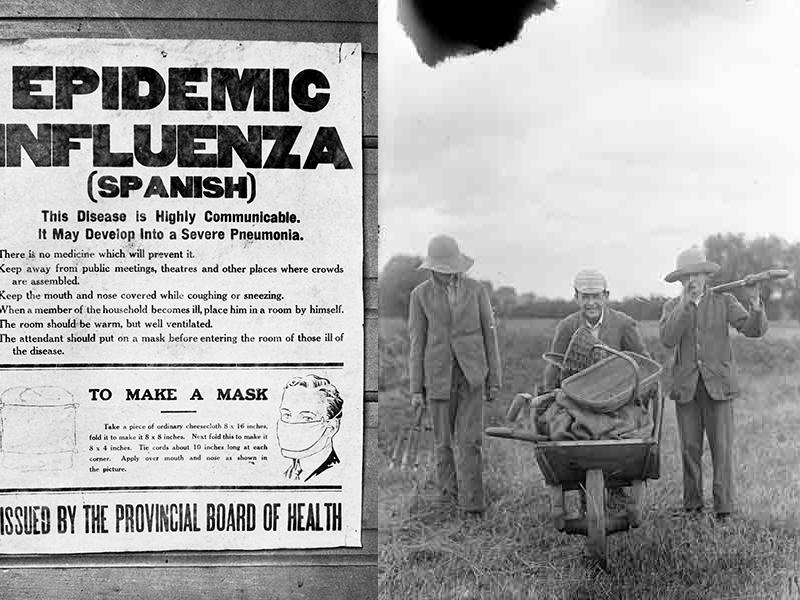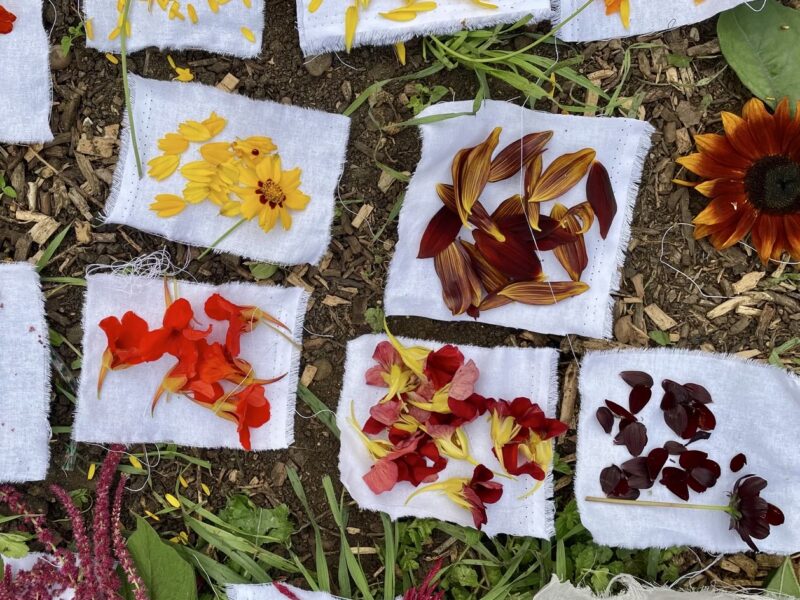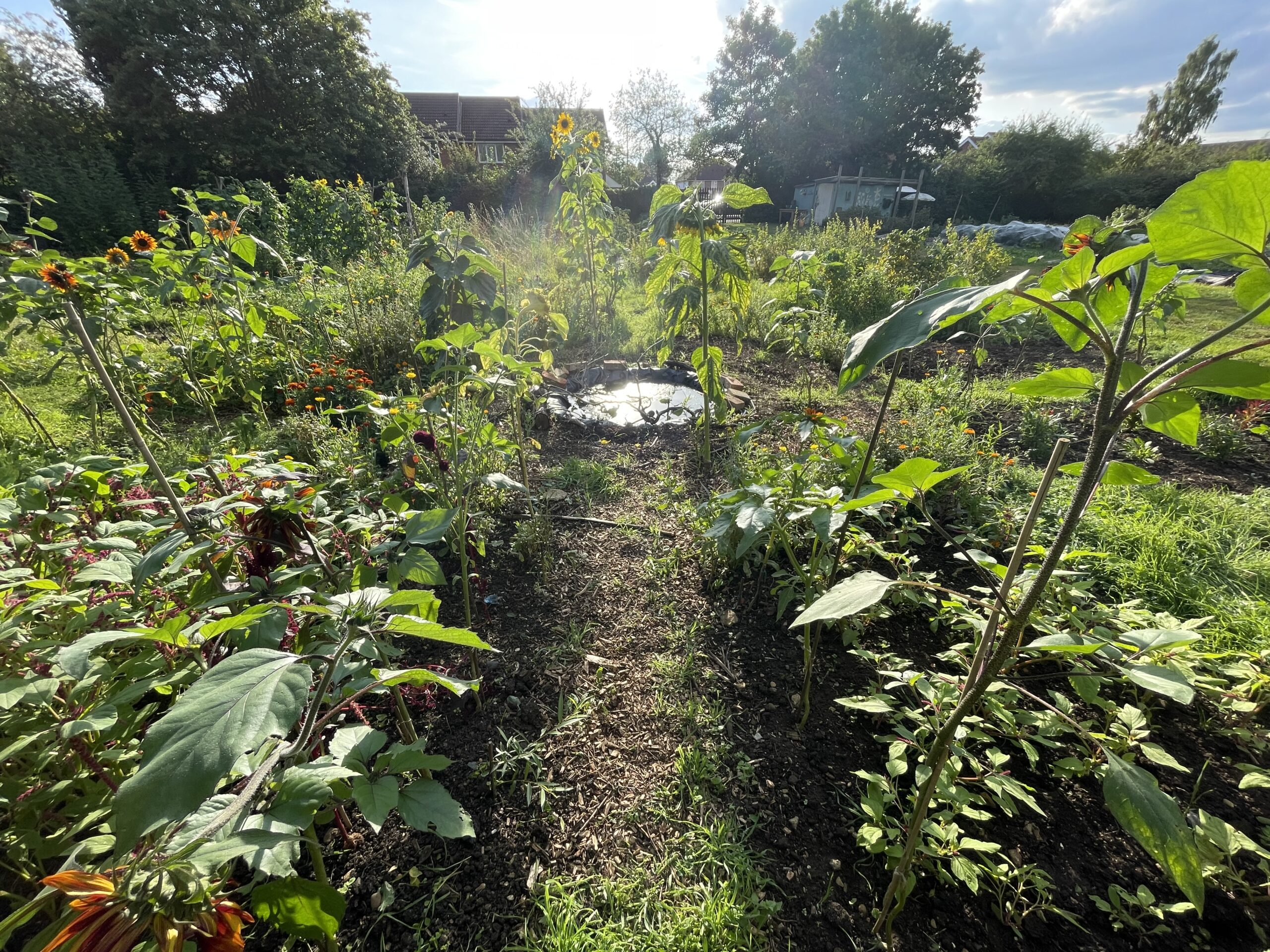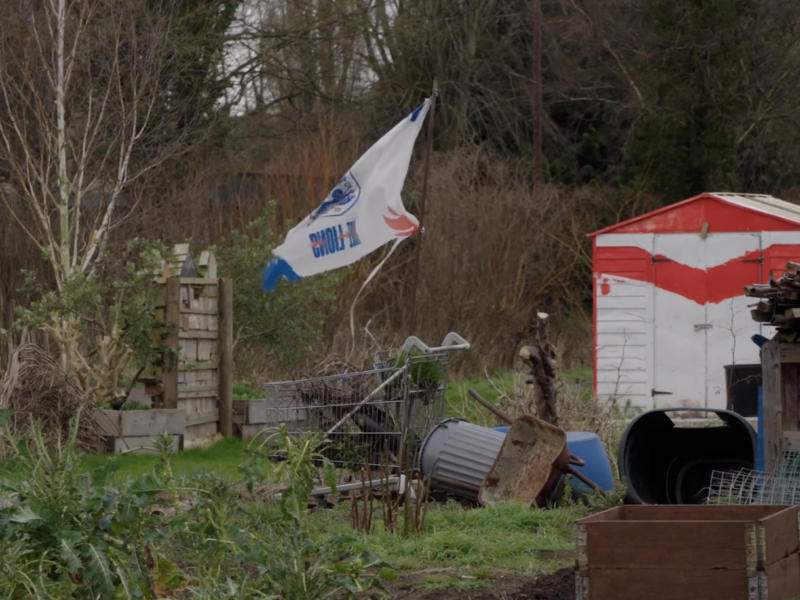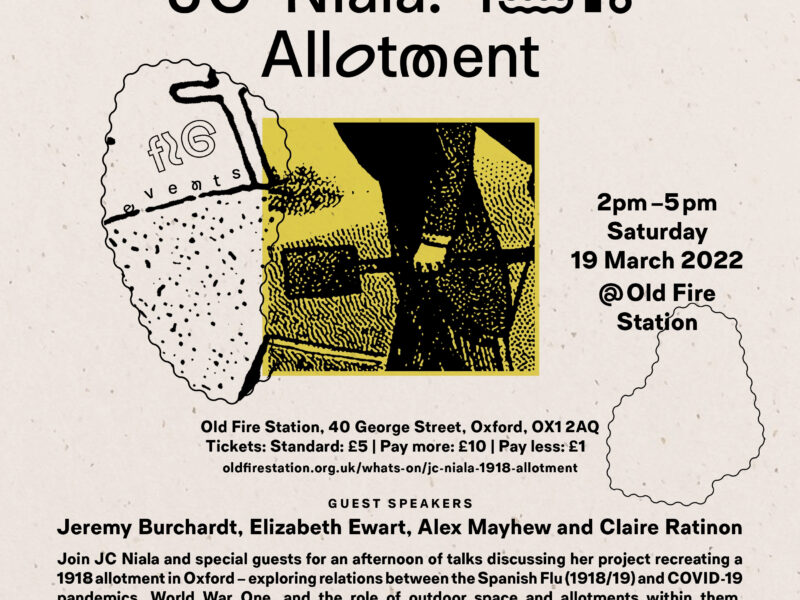Journal — March 2022
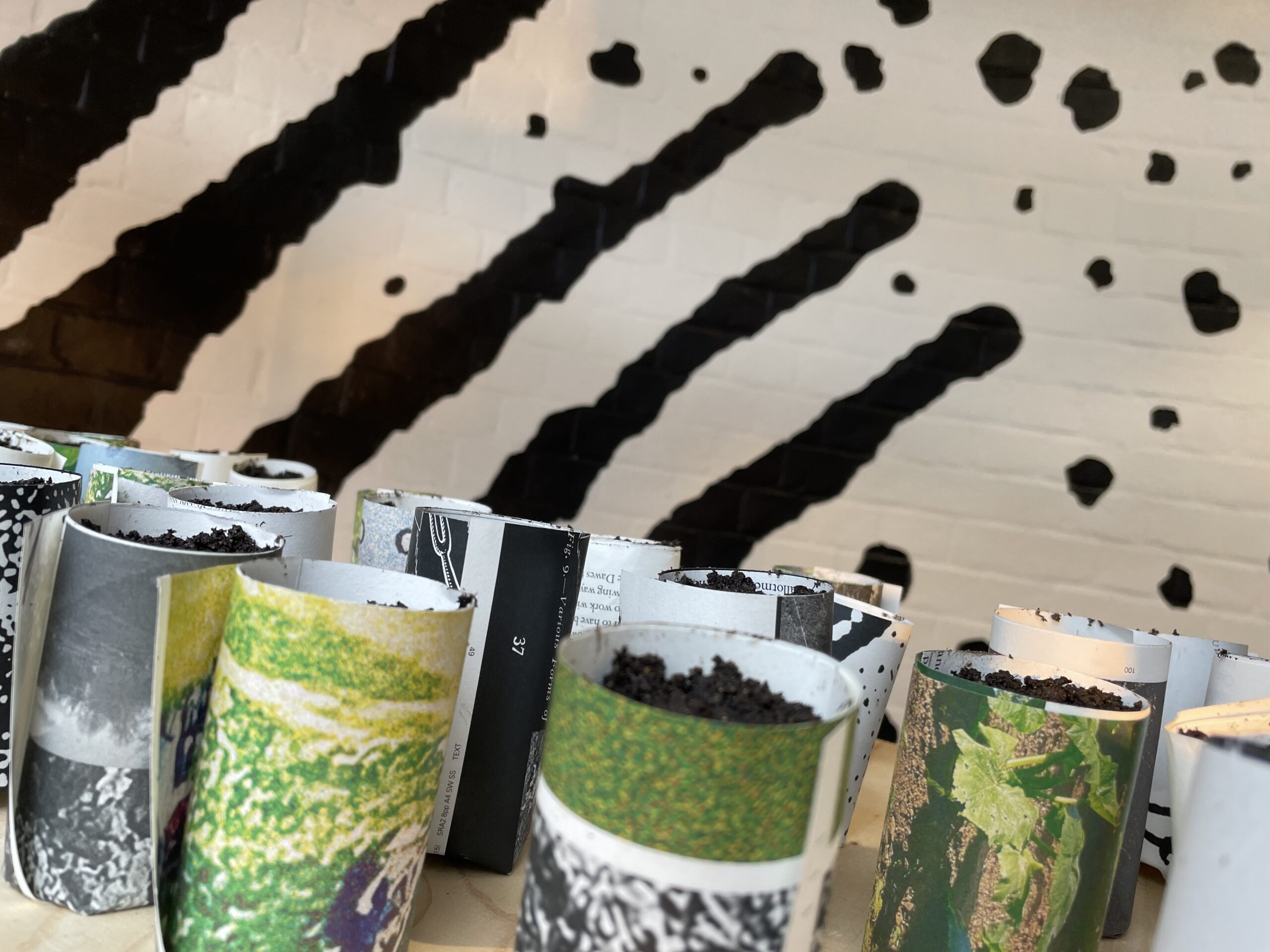
On Saturday 19th March at the Old Fire Station (OFS) in Oxford starting at 2pm, I will be launching my book and exhibition with a discussion event. I feel honoured that people whose work has inspired my own will be sharing their work alongside my poetry. There are still a few tickets left so you are most welcome to participate. In the way that seasons turn we have come full circle. A year ago, I was thinking about seedlings and what to plant on the 1918 Allotment. Despite my hope that the project would (literally) bear fruit, I had no confirmation of how it would turn out. It turned out like many gardens do – full of unexpected joys with a light dusting of challenges. This year I am once again planting seedlings for the seed sharing event that will happen during the exhibition on the 2nd of April.
The two windows of the Old Fire Station that face onto Gloucester Green have been turned into greenhouses with peas, beans (and more optimistically chillies) planted into fine compost and will, all being well, germinate in time for the seed sharing event. Of all the time travellers in the world, I think that seeds are the most exciting. This is because of the potential they contain. Here in Oxford, an archaeobotanist turned farmer by the name of John Letts ‘revived’ wheat seeds from medieval times by studying historical thatch and then working to recreate it from the genetic material of the seeds he found. I first heard about him at 1 North Parade a wonderful shop that knows about and indulges my passion for local food. Letts’ wheat is sustainable in its diversity and ability to be used for food (bread), drink (whisky and gin) and roofing. I find it incredible to think about the layers of time that Letts peeled through as he researched medieval thatch that was historically not replaced but became multiple layers of roofing on houses.
In the same way, all of the different people’s work that will be shared on the 19th March were the seed of something for me as I carried out my research and growing on the 1918 Allotment. Here is a taster of who they are and what they are going to be talking about:
Dr Jeremy Burchardt an esteemed allotment historian from the University of Reading who is ‘fascinated by the way we experience landscape’ will be talking about the ways in which, ‘Allotments have been a key resource for physical, mental and community well-being since they were introduced in the late eighteenth century. They can be particularly valuable in times of crisis, as many people have found during the Covid-19 pandemic.’ He will be saying, ‘something about the different ways, some familiar, some surprisingly different, in which allotments promoted well-being in the nineteenth century’.
Elizabeth Ewart, who is my doctoral research supervisor and the first person who helped me to understand and articulate that growing is about much more than food, will be talking about: ‘Panará Indigenous people in central Brazil and about the values and aesthetics that guide their gardening practices. Food production is a key pre-requisite in caring for others, and this in turn is the basis for producing kinship relations. Beyond producing food for daily consumption, planting and tending their gardens is about more than mere food production for Panará people. In the highlands of southern Ethiopia, a country often associated with assumptions of poverty and famine, aesthetic and moral values also inform farmers’ practices. Caring for the land, tending to animals and planting particular crops around the homestead are all informed by more than the simple need to produce food.’
Alex Mayhew is a social and cultural historian who shifted my understanding of wartime growing and he will share how, ‘Enduring military service in the First World War demanded adaptation. It lasted for over four years and for much of that time there was little sense of when it would ever end. Individuals suffered a series of overlapping crises as time began to lose all meaning. Yet, in ways that that might have become familiar during the era of Covid-19, people found ways to cope. Many soldiers turned to gardening as they sought to create a sense of their own “new normal”. They sowed flower beds in trenches, tended to the plants in cemeteries, and (away from the frontlines) built an extensive network of allotments.’
On the practical side Claire Ratinon is an organic food grower and writer whose skills and (Instagram page) I greatly admire. She will be talking about how, ‘The practice of growing food might not appear to be a radical act but – in this time of land inequality, widespread nature disconnection and under the shadow of the industrialised systems that feed us – it is.’
The link if you haven’t spotted it already is about the different facets of growing and the ways in which it nourishes through times of peace and times of conflict. How growing doesn’t happen just in rural areas but also cities. How both growing and war are ways in which we organise our worlds and through it all food sustains both our bodies and our souls. Next week will be the final blog post about this project. I will share how the event went and interesting titbits from the discussion I hope will follow. If you are beginning to grow this season – I hope your seeds will be successful in their journey toward the light.
